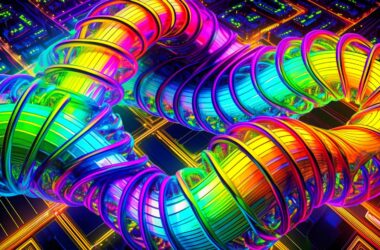Engineers at MIT have perfected a process that means 3D printers can now squirt out endless streams of molten glass.
While the thought of a machine firing molten glass endlessly is a bit frightening the process could prove revolutionary to a number of industries.
The system – called G3DP2 – allows users printing glass far more control over the hot material and the final product that existing tech.

The teams new AM (additive manufacturing) platform works by combining a digital three-zone thermal control system with a four-axis motion control system.
It is able to extrude glass by using a closed heated box to contains molten glass, and a second thermally controlled box to ‘print’ with it. The team used a movable plate to drop the object into place and lower as it is printed and a print above it to shape it.

Unlike existing 3D printing system this results in clear glass structures being printed. These could be used to create everything from decorations to parts of buildings.
The team main technical challenge was to ensure their new method allows the glass to cool correctly and crystalize into a solid structure without adding impurities (which would discolour the glass) or introduce structural problems (causing it to shatter).
In this architecture, the thermal energy applied to the heating system was decoupled from the mechanical load of the motion system [..] This allowed for improved durability of both systems through careful consideration of material properties and detailed analysis of constituent parts supporting each separate module. Still, the critical focus was given to the print head itself, situated at the interface between the modules and requiring the highest thermal and mechanical performance from its material choice.
They believe this new system would allow production at an industrial-scale and offer an enhanced production rate and greater reliability. The main advantage of the system – like other 3D printing methods – is product accuracy and repeatability.
Published by Chikara Inamura, Michael Stern, Daniel Lizardo, Peter Houk, and Neri Oxman, in Additive Manufacturing of Transparent Glass Structures in 3D Printing and Additive Manufacturing Vol. 5, No. 4








